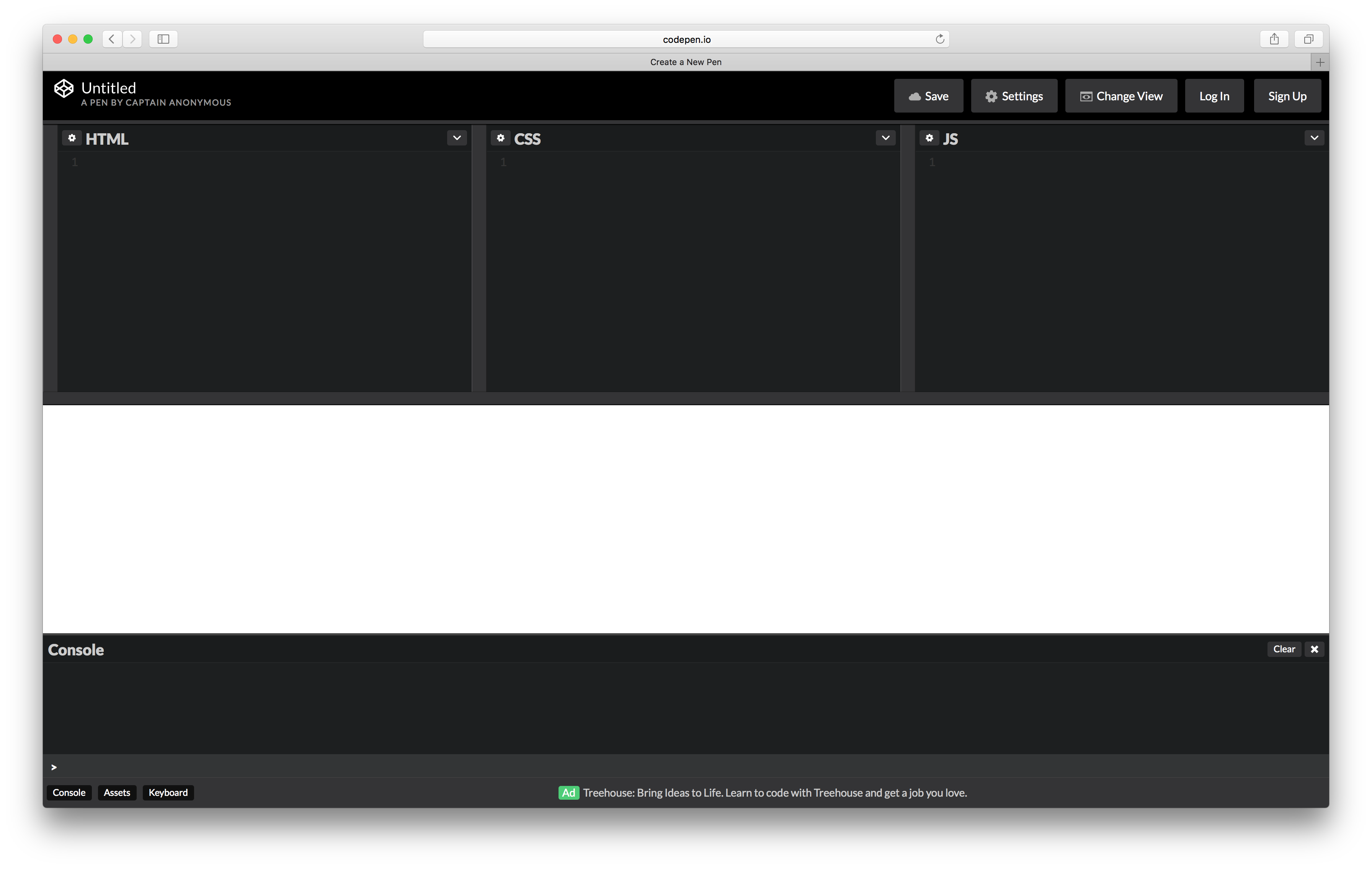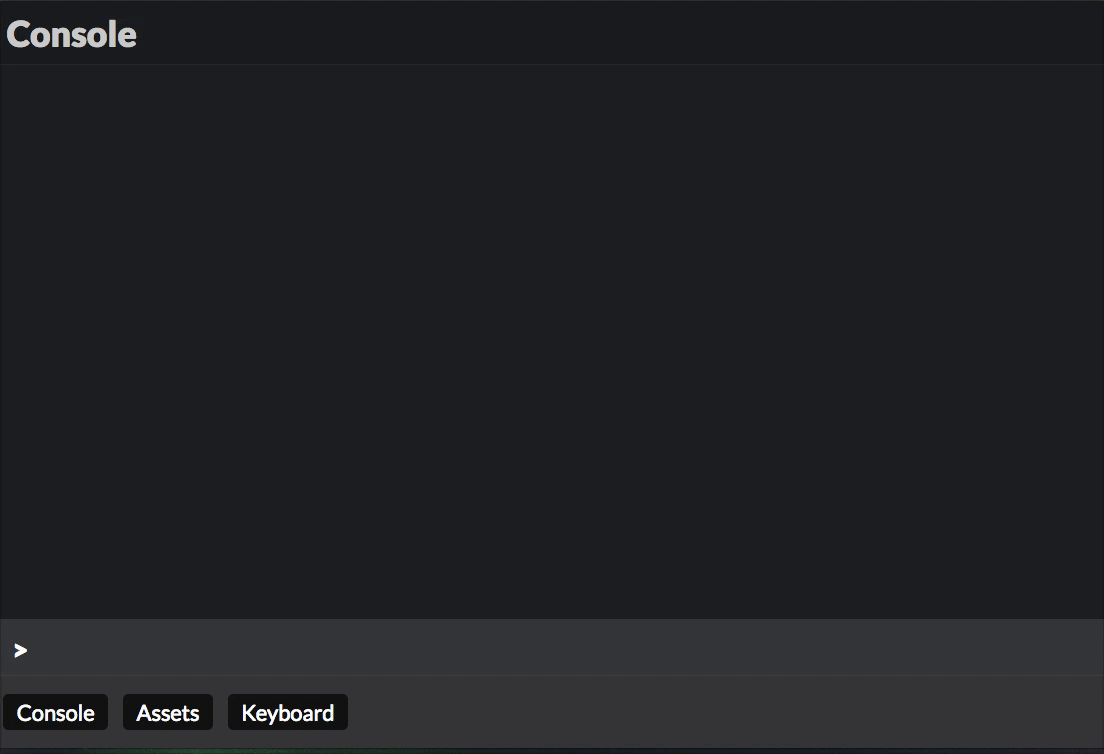Coding 101
What we will learn today?
- Getting started with JavaScript
-
Getting started with JavaScript
We will spend most of this lesson in Codepen. To get started, go to codepen.io/pen/ to create a new Pen. On the bottom left, click the "Console" button to open the console.

You can place your cursor right behind the > sign. Type a simple expression, such as 2 + 2 and hit enter. You will see expression, as well as its result, in the window above.

You will be able to follow most of this session along just entering expressions in the console like this.
Simple data types & Expressions
Numbers
Let’s start with something seemingly simple - numbers. Here are some:
1
15
3195803798
1.4
0.0000005
0
-23
You will see that there are whole numbers (no decimal point) and real numbers (decimal point), which in JavaScript are so-called “floating point” numbers. Numbers can be positive or negative and they support all the basic math operators that you would expect:
2 + 2 // 4
2 - 5 // -3
2 * 3 // 6
10 / 2 // 5
3 * -2 // -6
Operators have the same precedence as in algebra: * and / have higher precedence than + and -.
- TODO: Do math exercise
- TODO: What about Infinity, Math.PI, IEEE floating point bullshit, NaN
Strings
Strings represent any sort of text. They are delimited by single quotes (') or double quotes (”) and can be of any length.
'' // empty string
"" // empty string
'Hello'
'I am learning JavaScript'
'It\'s been a great journey so far!'
"Double quotes work as well"
If you need single or double quotes inside the string, you need to “escape” them by putting a backslash in front of them. If you don’t do this, the JavaScript engine will think the string ends here, because it encounters a quote.
The most common operation on strings is to append one string to another. This is called string concatenation. It’s achieved by the plus (+) operator:
"Hello" + "World" // "HelloWorld"
- TODO: Introduce string concatenation
- TODO: What about basic string functions, like substr, replace etc?
Booleans
Booleans are a data type that can only have two values: true and false.
Like numbers, they can be combined using operators, but there are different operators for booleans (analoguous to Boolean algebra). The most important ones are:
!(NOT), which negates a value:!true // false !false // true&&(AND), which is only true if both operands are true:false && false // false true && false // false false && true // false true && true // true||(OR), which is true if at least one of the operands is true:false && false // false true && false // true false && true // true true && true // true
TODO: When to introduce truthiness and falsiness? Probably in comparisons?
Exercise: Put simple mathematical expressions into the console:
2 * 2,2 + 2,5 * 7 - 13Exercise: Calculate the area of a circle (r * r * pi). Do a quick Google search on how to use PI in JavaScript.See what happens when you "add" two strings together
Research the JS Math library. sqrt, floor, ceil, round
Write an expression that outputs the percentage of students who are female. Make it so it outputs it as
58%, and make sure you use the actual numbers of women and the total number of students. Solution:console.log(Math.round(7 / 17 * 100) + "%");
From REPL to console.log
- Single expressions are not very useful, you want to write applications
- More than one statement? Move it to the
JSbox in Codepen - Now you don't get any immediate feedback
- Use
console.logto print to the console:console.log(3 + 3); - Write statements below each other
THOUGHT: Codepen does not have a "run" button, so it's quite intransparent when it actually re-runs a program. Maybe a different tool is better? A simple jsbin configuration, maybe?